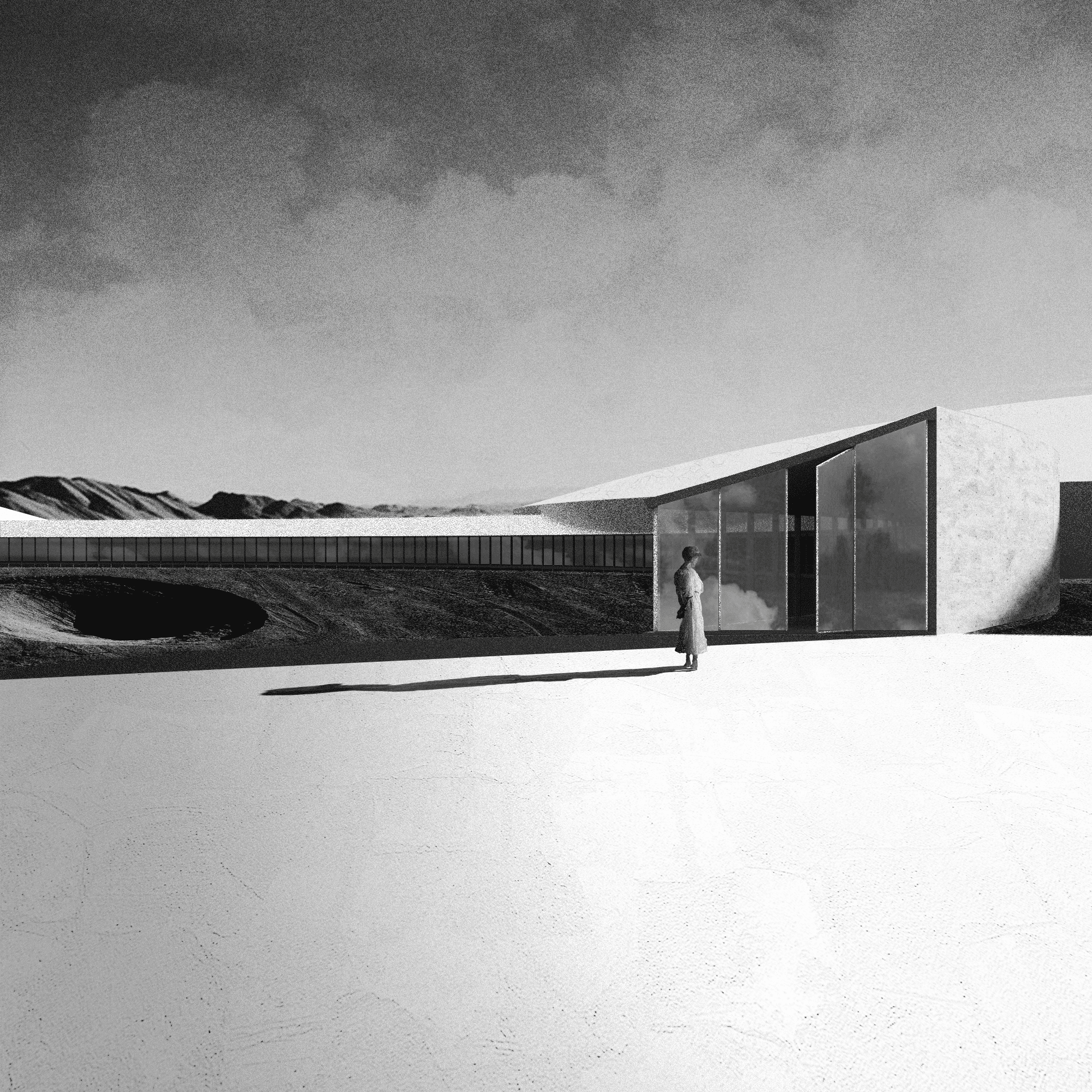
No More Shadows
The defining visual trait of a nuclear explosion is the double flash. No other light source can be as bright as a nuclear bomb and have this characteristic. As the explosion starts the bomb is heated to temperatures around 10.000.000K this superheats the air around it, causing it to emit light, FLASH 1. The shockwave from the explosion then smothers the light by becoming opaque, explaining the brevity of the flash. The shockwave at this point is still close enough to not have touched anything around it. As the shockwave travels out it becomes colder and thus more transparent, allowing the light out again. This flash lasts much longer and has a more diffuse nature due to the size of the source, FLASH 2. The full energy of the terrible weapon is now released and everything around it is destroyed.
The monument takes the visitor through the stages of the explosion as if witnessed when there. You arrive through the hauntingly beautiful cratered landscape of the nevada test site to find three inverted craters surrounding a courtyard with a central crater.When you enter the building you step inside a bright hallway, on your right hand information about nuclear weapons and the devastation they cause, on the left a glazed view towards the courtyard.
The first dome contains a central bright pointlight and human figures casting long sharp shadows all around. Signifying life still going on at the time of the detonation and FLASH 1. The second dome is flooded by bright light from a large, diffuse source, FLASH 2. The only remains in the room are the hazy nuclear shadows of the people that once were, the spots of the ground that were not burnt by the explosion due to the human shield. The final room takes you back to the moment before it all happened. The nuclear bomb hanging from a cross under its own halo, depicted as a divine intervention. The saviour that stops wars and declares victors. But at what cost?
Competition entry for the Last Nuclear Bomb Shelter






